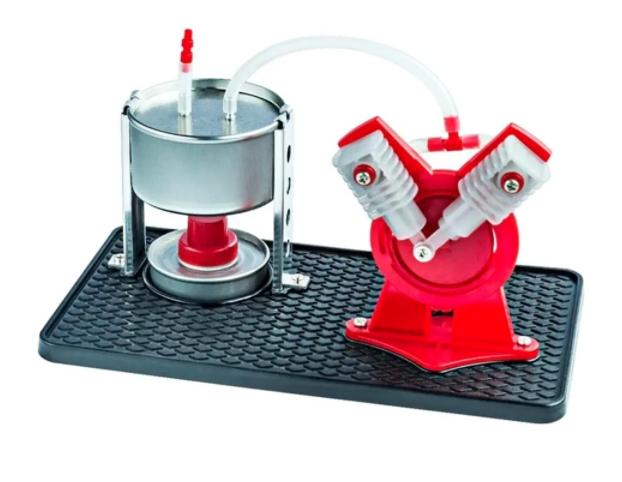
Steam Engine
Mechanical device that converts thermal energy into mechanical energy by evaporating water into steam and using that steam to power a machine.
Components:
- Heat source: e.g. burning coal in a furnace
- Boiler with water: the boiler contains water which is heated to form steam
- Valve: controls the flow of steam into the chamber
- Cylinder and piston: the steam actuates the piston in a reciprocating movement
- Crankshaft: to convert linear motion into circular motion (e.g. a steam locomotive of a train)
Working Principle:
The heat source is used to heat the water inside the boiler.
It produces high pressure steam which is then piped through the valve into a tightly sealed piston inside a chamber. The pressure pushes the piston out which in turn is connected to a crankshaft that converts linear motion into circular motion.
As the gas expands it loses kinetic energy and condenses into water (or colder steam), reducing the pressure inside the chamber.
The piston is driven back by the combined action of reduced pressure in the chamber and the inertia of the moving crankshaft – exhaust stroke. As the condensed water (or cold steam) is expelled the valve switches allowing new high pressure steam to come in and the process repeats.
In a locomotive there are typically two cylinders (one on each side) out of phase with one another to provide continuous motion.

Limitations of the steam engine:
- huge and heavy hence cannot be used for running small vehicles like cars and buses
- slow start: requires steam to be generated
- not safe: high steam pressure can cause the boiler to burst
- low efficiency: energy is lost in the form of heat due to large surface area
Instructions:
- Fill the tank with water
- Turn on the heat source
- Watch the engine work as long as the heat source is active and there is water in the tank